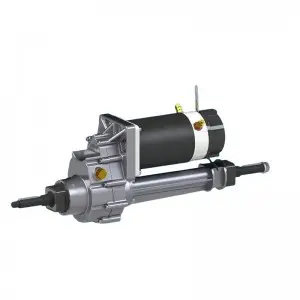Confusion or misunderstanding often arises when it comes to the complex components that make a vehicle run smoothly. One of the most common debates in the automotive world is the difference between a transaxle and a transmission. Many people are unsure if these terms are interchangeable, or if they refer to different things entirely. In this blog, we will delve into this topic and clarify the differences between transaxles and gearboxes. So buckle up and let’s embark on this journey of enlightenment!
Define the transaxle and transmission:
First, it is important to accurately define the transaxle and transmission. In simple terms, the transmission is responsible for transferring power from the engine to the wheels. It ensures smooth gear changes, allowing the vehicle to adjust its speed and torque accordingly. A transaxle, on the other hand, is the component that combines the functions of the transmission, differential and half shafts. The transaxle plays a vital role in distributing power to the drive wheels while integrating the transmission and differential within the same housing.
Components and Functions:
Although both transaxles and transmissions are involved in transmitting power from the engine to the wheels, they differ significantly in structure and function. A transmission typically contains various gears, clutches and shafts that enable a vehicle to shift gears efficiently. Its main focus is on gear ratio changes for different speed or torque levels. In contrast, a transaxle not only contains the components found in the transmission, it also has a differential. The job of the differential is to transmit power to the wheels while allowing them to spin at different speeds, especially when the vehicle is cornering.
Application and Vehicle Type:
Knowing how these components are used in different vehicles will help differentiate a transaxle from a transmission. Transaxles are commonly found on front-wheel-drive vehicles because their compact design allows for optimal weight distribution for better traction. In addition, transaxles are often used in mid-engine and rear-engine vehicles, where a combined transmission and differential offers advantages in terms of space and weight distribution. On the other hand, transmissions are mostly used in rear wheel drive vehicles where the power from the engine is transmitted to the rear wheels.
In conclusion, while the terms transaxle and gearbox may seem similar, they are not synonymous. The transmission is primarily concerned with changing the gear ratios that allow the vehicle to change gears smoothly. A transaxle, on the other hand, combines the functions of a transmission and a differential, making it an essential part of front-wheel drive, mid-engine, and rear-engine vehicles. By understanding the difference between these two components, both enthusiasts and drivers can gain a greater understanding of the intricacies of a vehicle’s inner workings. So the next time you come across these terms in a conversation, you can confidently clarify and introduce others to the fascinating world of automotive engineering.
Post time: Jul-26-2023


